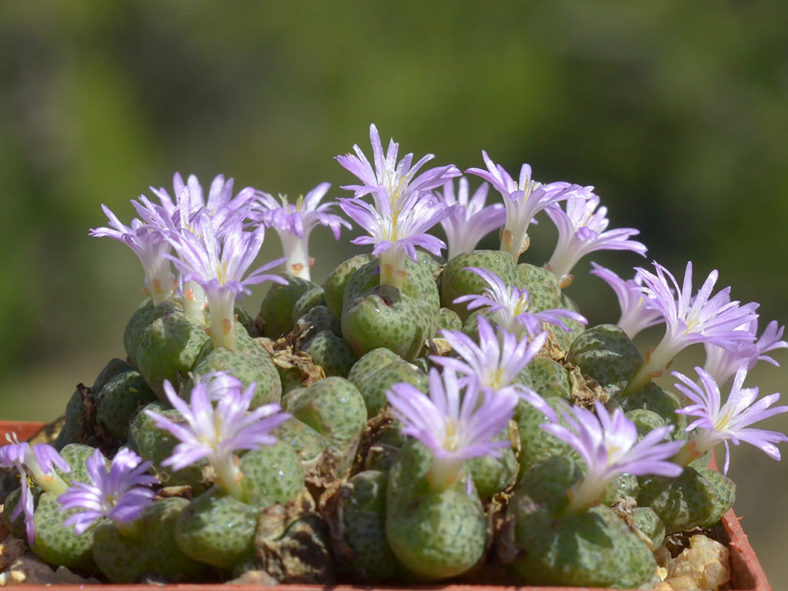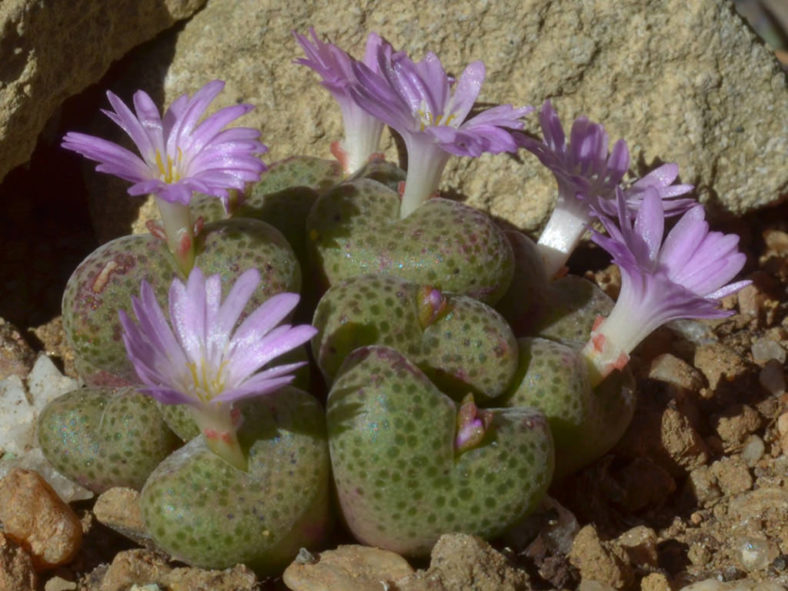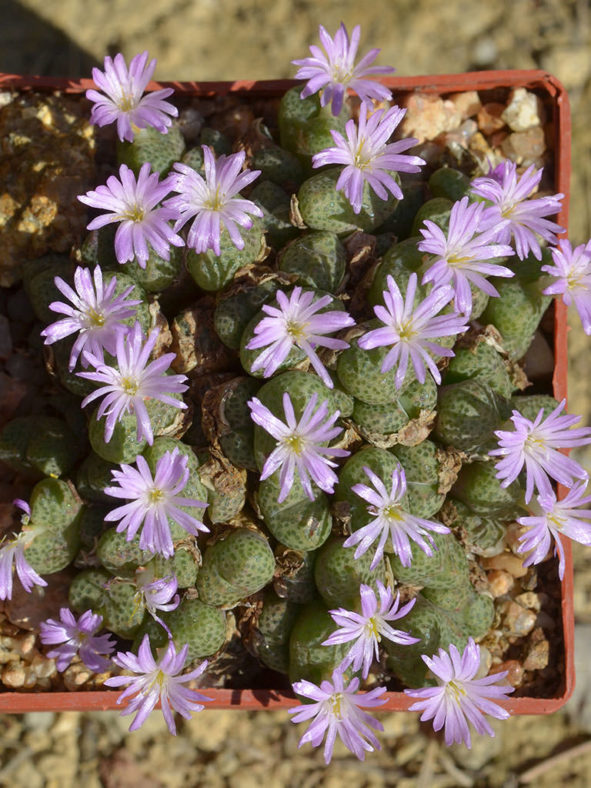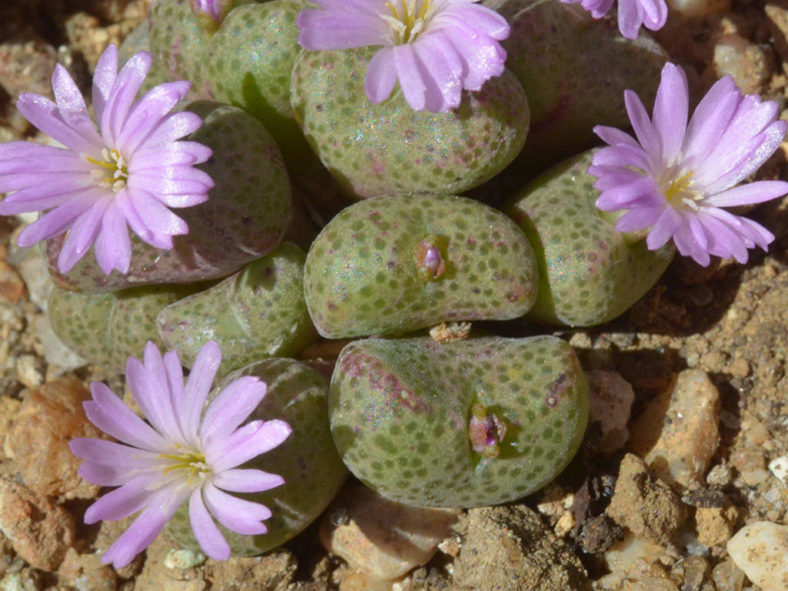Scientific Name
Conophytum taylorianum (Dinter & Schwantes) N.E.Br.
Synonym(s)
Conophytum taylorianum var. taylorianum
Scientific Classification
Family: Aizoaceae
Subfamily: Ruschioideae
Tribe: Ruschieae
Genus: Conophytum
Etymology
The specific epithet "taylorianum (tay-lor-ee-AY-num)" honors Edward Taylor (1848-1928), a British mesemb enthusiast.
Origin
The native range of Conophytum taylorianum is the Succulent Karoo, which stretches along the coastal strip of southwestern Namibia and the Northern Cape province of South Africa. It grows in quartzite or crumbling sandstone cliffs or ridges, often in the shade with ferns.
Description
Conophytum taylorianum is a dwarf succulent with a body that consists of a pair of fleshy leaves fused into a heart-shaped structure with apex keeled or not and often bilobate. It produces offsets readily, forming a clump up to 16 inches (40 cm) in diameter. The bodies can grow up to 1.2 inches (3 cm) tall and 0.8 inches (2 cm) in diameter. They are smooth or finely papillate, bluish-green to reddish or pale bluish-white, and heavily spotted.
The diurnal flowers are magenta or pink and appear in the fall.

How to Grow and Care for Conophytum taylorianum
Light: This succulent needs bright light but does not like too much direct sun. To avoid sunburn, place your C. taylorianum in a position to receive a few hours of full sun in cooler periods of the day. The plant stretches if it needs more light.
Soil: C. taylorianum thrives best in porous soil mixes that allow water to drain away quickly. Use a commercial potting mix specially designed for growing succulents, or make your own.
Temperature: High temperatures are not a problem, but the plant can be damaged when the temperature goes below freezing. C. taylorianum can withstand temperatures as low as 35 °F (1.7 °C). USDA Plant Hardiness Zones 10b to 11b, 35 to 50 °F (1.7 to 10 °C).
Watering: When it goes dormant in the spring, C. taylorianum requires little or no water. When it begins to grow again in the fall, it is safe to water deeply, allowing the soil to dry before between waterings. If leaves start to wrinkle during active growth, your plant needs water.
Fertilizing: This small succulent is a light feeder and does not need fertilizer if repotted every two years.
Repotting: The best time to repot C. taylorianum is at the beginning of the active growth period. However, repotting can be done almost any time while the plant is actively growing.
Propagation: This species is usually grown from seeds. Like all Conophytums, it is also easily propagated by division. The best time to divide C. taylorianum is in late summer or early fall before it begins to break dormancy or after it has flowered. Sow the seeds in fall in a pot with a well-drained soil mix.
Learn more at How to Grow and Care for Conophytum.
Toxicity of Conophytum taylorianum
C. taylorianum is non-toxic and safe to grow around children and pets.
Links
- Back to genus Conophytum
- Succupedia: Browse succulents by Scientific Name, Common Name, Genus, Family, USDA Hardiness Zone, Origin, or cacti by Genus
Photo Gallery
Click on a photo to see a larger version.


